|
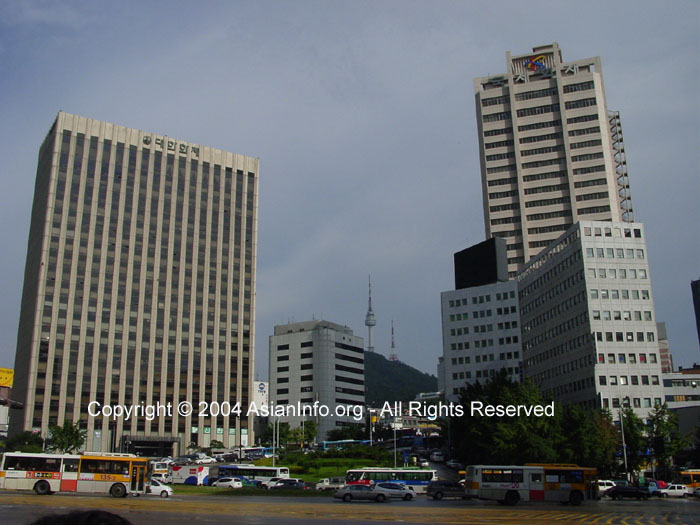
|
Since the 1960s, South Korea
has achieved an incredible record of growth and
global integration to become a high-tech
industrialized economy. Four decades ago, GDP
per capita was comparable with levels in the
poorer countries of Africa and Asia. In 2004,
South Korea joined the trillion dollar club of
world economies, and currently is among the
world's 20 largest economies. Initially, a
system of close government and business ties,
including directed credit and import
restrictions, made this success possible. The
government promoted the import of raw materials
and technology at the expense of consumer goods,
and encouraged savings and investment over
consumption. The Asian financial crisis of
1997-98 exposed longstanding weaknesses in South
Korea's development model including high
debt/equity ratios and massive short-term
foreign borrowing. GDP plunged by 6.9% in 1998,
and then recovered by 9% in 1999-2000. Korea
adopted numerous economic reforms following the
crisis, including greater openness to foreign
investment and imports. Growth moderated to
about 4-5% annually between 2003 and 2007. With
the global economic downturn in late 2008, South
Korean GDP growth slowed to 0.2% in 2009. In the
third quarter of 2009, the economy began to
recover, in large part due to export growth, low
interest rates, and an expansionary fiscal
policy, and growth exceeded 6% in 2010. The
South Korean economy's long term challenges
include a rapidly aging population, inflexible
labor market, and overdependence on
manufacturing exports to drive economic growth.
|
|
|
GDP (purchasing power
parity):
|
|
$1.467 trillion (2010 est.)
country
comparison to the world: 13
$1.383 trillion (2009 est.)
$1.38 trillion (2008 est.)
note: data
are in 2010 US dollars
|
|
|
GDP (official exchange
rate):
|
|
$986.3 billion (2010 est.)
|
|
|
GDP - real growth rate:
|
|
6.1% (2010 est.)
country
comparison to the world: 35
0.2% (2009 est.)
2.3% (2008 est.)
|
|
|
GDP - per capita (PPP):
|
|
$30,200 (2010 est.)
country
comparison to the world: 45
$28,500 (2009 est.)
$28,500 (2008 est.)
note: data
are in 2010 US dollars
|
|
|
GDP - composition by
sector:
|
|
agriculture: 3%
industry: 39.4%
services: 57.6%
(2008 est.)
|
|
|
Labor force:
|
|
24.62 million (2010 est.)
country
comparison to the world: 25 |
|
|
Labor force - by
occupation:
|
|
agriculture: 7.3%
industry: 24.3%
services: 68.4%
(2010 est.)
|
|
|
Unemployment rate:
|
|
3.7% (2010 est.)
country
comparison to the world: 33
3.7% (2009 est.)
|
|
|
Population below poverty
line:
|
|
15% (2006 est.)
|
|
|
Household income or
consumption by percentage share:
|
|
lowest 10%: 2.7%
highest 10%: 24.2%
(2007)
|
|
|
Distribution of family
income - Gini index:
|
|
31.4 (2009)
country
comparison to the world: 104
35.8 (2000)
|
|
|
Investment (gross fixed):
|
|
28.7% of GDP (2010 est.)
country
comparison to the world: 23 |
|
|
Public debt:
|
|
23.7% of GDP (2010 est.)
country
comparison to the world: 101
23.5% of GDP (2009 est.)
|
|
|
Inflation rate (consumer
prices):
|
|
3% (2010 est.)
country
comparison to the world: 91
2.8% (2009 est.)
|
|
|
Central bank discount rate:
|
|
1.25% (31 December 2009)
country
comparison to the world: 133
1.75% (31 December 2008)
|
|
|
Commercial bank prime
lending rate:
|
|
5.65% (31 December 2009 est.)
country
comparison to the world: 126
7.17% (31 December 2008 est.)
|
|
|
Stock of narrow money:
|
|
$101.9 billion (31 December
2010 est)
$82.54 billion (31 December
2009 est)
|
|
|
Stock of broad money:
|
|
$1.346 trillion (31 December
2009)
$1.132 trillion (31 December
2008)
|
|
|
Stock of domestic credit:
|
|
$1.057 trillion (31 December
2010 est.)
country
comparison to the world: 15
$935.4 billion (31 December
2009 est.)
|
|
|
Market value of publicly
traded shares:
|
|
$836.5 billion (31 December
2009)
country
comparison to the world: 17
$494.6 billion (31 December
2008)
$1.124 trillion (31 December
2007)
|
|
|
Agriculture - products:
|
|
rice, root crops, barley,
vegetables, fruit; cattle, pigs, chickens, milk,
eggs; fish
|
|
|
Industries:
|
|
electronics,
telecommunications, automobile production,
chemicals, shipbuilding, steel
|
|
|
Industrial production
growth rate:
|
|
12.1% (2010 est.)
country
comparison to the world: 6 |
|
|
Electricity - production:
|
|
417 billion kWh (2009 est.)
country
comparison to the world: 11 |
|
|
Electricity - consumption:
|
|
402 billion kWh (2009 est.)
country
comparison to the world: 11 |
|
|
Electricity - exports:
|
|
0 kWh (2009)
|
|
|
Electricity - imports:
|
|
0 kWh (2009)
|
|
|
Oil - production:
|
|
48,180 bbl/day (2010 est.)
country
comparison to the world: 65 |
|
|
Oil - consumption:
|
|
2.185 million bbl/day (2010
est.)
country
comparison to the world: 10 |
|
|
Oil - exports:
|
|
907,100 bbl/day
country
comparison to the world: 21
note: exports
consist of oil derivatives (gasoline, light oil,
and diesel), not crude oil (2009)
|
|
|
Oil - imports:
|
|
3.074 million bbl/day (2009)
country
comparison to the world: 5 |
|
|
Oil - proved reserves:
|
|
0 bbl (1 January 2010 est.)
country
comparison to the world: 162 |
|
|
Natural gas - production:
|
|
651 million cu m (2009 est.)
country
comparison to the world: 66 |
|
|
Natural gas - consumption:
|
|
34.09 billion cu m (2009
est.)
country
comparison to the world: 25 |
|
|
Natural gas - exports:
|
|
0 cu m (2009 est.)
country
comparison to the world: 79 |
|
|
Natural gas - imports:
|
|
32.69 billion cu m (2009
est.)
country
comparison to the world: 10 |
|
|
Natural gas - proved
reserves:
|
|
50 billion cu m (1 January
2008 est.)
country
comparison to the world: 64 |
|
|
Current account balance:
|
|
$36.35 billion (2010 est.)
country
comparison to the world: 12
$42.67 billion (2009 est.)
|
|
|
Exports:
|
|
$466.3 billion (2010 est.)
country
comparison to the world: 7
$373.6 billion (2009 est.)
|
|
|
Exports - commodities:
|
|
semiconductors, wireless
telecommunications equipment, motor vehicles,
computers, steel, ships, petrochemicals
|
|
|
Exports - partners:
|
|
China 21.5%, US 10.9%, Japan
6.6%, Hong Kong 4.6% (2008)
|
|
|
Imports:
|
|
$417.9 billion (2010 est.)
country
comparison to the world: 9
$317.5 billion (2009 est.)
|
|
|
Imports - commodities:
|
|
machinery, electronics and
electronic equipment, oil, steel, transport
equipment, organic chemicals, plastics
|
|
|
Imports - partners:
|
|
China 17.7%, Japan 14%, US
8.9%, Saudi Arabia 7.8%, UAE 4.4%, Australia
4.1% (2008)
|
|
|
Reserves of foreign
exchange and gold:
|
|
$274.6 billion (31 December
2010 est.)
country
comparison to the world: 7
$270 billion (31 December
2009 est.)
|
|
|
Debt - external:
|
|
$370.1 billion (31 December
2010 est.)
country
comparison to the world: 24
$370.8 billion (31 December
2009 est.)
|
|
|
Stock of direct foreign
investment - at home:
|
|
$112.1 billion (31 December
2010 est.)
country
comparison to the world: 30
$110.8 billion (31 December
2009 est.)
|
|
|
Stock of direct foreign
investment - abroad:
|
|
$115.6 billion (31 December
2009)
country
comparison to the world: 25
$74.6 billion (30 June 2008)
|
|
|
Exchange rates:
|
South Korean won (KRW) per US
dollar - 1,153.77 (2010), 1,276.93 (2009),
1,101.7 (2008), 929.2 (2007), 954.8 (2006)
|
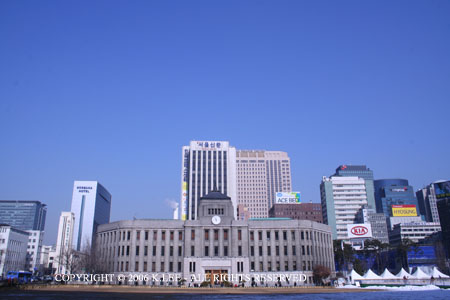
Seoul City Hall
The
Start of Korea's Growth in the 1960s
The
journey to industrialization began in the early
1960s with the introduction of First Five-Year
Economic Development Plan. It was at this point
the government made a conscious policy shift from
the inward-looking growth strategy of import
substitution to the outward-looking growth
strategy of export promotion. The essence of
export promotion growth strategy was to promote
exports of light manufactured goods in which Korea
possessed comparative advantage given its cheap
labor cost. The government utilized various
macroeconomic mechanisms at its disposal in
implementing this strategy, such as maintaining
high interest rates to mobilize domestic savings,
and enacting the Foreign Capital Promotion Act to
encourage the inflow of foreign investment.
In
order to promote exports, the government also
devalued the currency by nearly 100 % and replaced
the previous multiple exchange rate system with a
unified exchange rate. It also provided short-term
export financing, allowed tariff rebates on
materials imported for re-export use, and
simplified customs procedures. This new strategy
of economic development also affected the
government's view toward imports.
Realizing
that it was insufficient for Korea to insist on
self-sufficiency in major grains, the government
allowed large quantity of grain to be imported for
the first time.
The
government's export promotion strategy did not
receive warm acceptance at first. Conservative
economists argued that such strategy would
endanger national independence through excessive
reliance on foreign capital. Indeed, foreign
capital made up 83 % of total Korean investment in
1962, and it was not until late in the decade that
Korea raised its exports enough to attain a
credible debt servicing capability.
Yet,
the alternatives were even less acceptable. During
the 1950s, Korea had depended on grant-in-aid and
concessionary public loans, mainly from the United
States, which financed imports and domestic
projects.
Back
to Top...
Information
provided by the Korean Embassy
Korea's
Heavy
and Chemical Industry Promotion in the 1970s
In the early
1970s, the changing international economic
environment had a significant impact on Korea. In
1971, the Nixon Administration reduced the number
of U.S. armed forces stationed in Korea by about
one-third, a decision seen as the beginning of an
eventual complete withdrawal of the U.S. forces
from the Korea Peninsula. In response, the
government resolved to develop Korea's own defense
industry to a support self-sufficient military
force.
Also
that same year, the Bretton Woods system that had
sustained stability in the international financial
system collapsed. For Korea, the subsequent
fluctuation in exchange rates had a damaging
effect on the balance of payments. The worldwide
commodity shortage of 1972-1973 and the oil shock
of 1973-1974 merely compounded the problem. Korea
had to respond decisively to the deteriorating
trade balance by modifying its export promotion
strategy. The measures undertaken by the
government were to restructure the composition of
commodity exports in favor of a more
sophisticated, higher value-added products, to
diversify its trade partners, and to increase
domestic agricultural output.
To
upgrade the composition of its exports, Korea
turned to the heavy and chemical industry (HCI).
Already an important priority in the Third
Five-Year Plan (1972-1976), HCI received greater
emphasis because of the changes in the external
environment. With the announcement of the Heavy
and Chemical Industry Development Plan in 1973,
the government set forth an accelerated
development schedule for technologically
sophisticated industries. Investment in new
industries produced significant results, and the
country soon developed successful undertakings in
electronics, shipbuilding, and other fields.
However, the HCI drive also resulted in a number
of negative effects. To initiate these industries,
extensive investment in capital intensive
industries had to be made, such as power
generation equipment, heavy machinery, and diesel
engines.
Firms
that made such investments accumulated excessive
debt in the process. In addition, the sharp demand
for low-interest loans swelled the domestic money
supply. The government's low interest rate policy
to support HCI reduced savings, and producers of
light manufactured goods were losing investment
funds to the new industries.
As
the HCI drive spread, the growing demand for
skilled workers pushed up domestic wages. As a
result, the wage differential between skilled and
unskilled workers widened during the 1970s. Also,
HCI accelerated the urbanization of Korea, as
workers flocked to industrial centers where there
were jobs available. In order to improve the
income distribution among skilled and unskilled
labor, as well as urban and rural workers, the
government initiated the self-help SaemaCul
Undong (New Community Movement) to improve
productivity and living standards in rural areas.
The government adopted grain price support
program.
These
programs were successful in raising crop yields
and rural income and in reducing the imbalance in
Koreans' standard of living. The HCI drive policy
produced impressive results. Between 1972 and 1978
the GNP growth averaged 10.8 % annually, and the
annual growth rate from 1976 and 1978 reached 11.2
%. The share of HCI products in total exports rose
from 21.3 % in 1972 to 34.7 % in 1978. However,
this progress came at the cost of high inflation.
Wholesale
price increases accelerated to nearly 18 % each
year from 1972 to 1979, compared to 12 % between
1962 and 1971. In addition, Korea's industrial
structure was distorted by over-investment in HCI
and under-investment in light industries. The
government controls also distorted prices and
stifled competition. At the same time, real wages
were increasing faster than productivity,
weakening export competitiveness.
Back
to Top...
Information
provided by the Korean Embassy
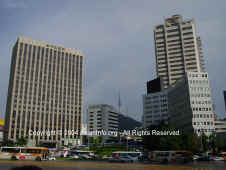
Korea's
Rationalization
and Liberalization in the 1980s
By
1979, the government realized the dangers posed by
these structural imbalances. Accordingly, it
initiated a comprehensive stabilization program
designed to control excess liquidity, realign
credit priorities, eliminate price distortions,
and promote competition. However, external and
internal circumstances such as the second oil
shock and the assassination of President Park
Chung Hee in 1979 pushed the Korean economy into
turmoil. Korea's economic performance in 1980 was
the worst in more than 20 years as the economy
contracted by 5.2 %, with the wholesale price
soaring more than 38 %, and the current account
deficit reaching US$5.3 billion.
To
address the excess liquidity problem, the
government forced firms suffering from excess
capacity, namely, those involved in
power-generation equipment industry and automobile
industry, to merge. The power-generation equipment
manufacturing industry was consolidated into the
Korea Heavy Industrial Company in August 1980, the
automobile industry was also ordered to specialize
its production of vehicles to attain economies of
scale in production. Later that year, firms
producing diesel engines, heavy electrical
equipment, electronic exchangers, and copper
smelting were also order to specialize according
to particular product lines, or be merge with
others.
Between
1984-1987, further rationalization of industries
took place in shipping and overseas construction.
The rationalization program entailed reducing the
number of firms through mergers, reducing their
shipping capacity or calling off deficit-ridden
overseas construction projects, and lowering tax
and financial burdens in the process.
While
these measures did, to some degree, reduce excess
capacity in HCI, the concentration of economic
power increased, since many of the troubled firms
were taken over by the growing Korean
conglomerates or chaebol. Moreover, the
restrictions on market entry and investment
further deepened a monopolistic hold on the
markets for HCI products.
Such
large scale restructuring of industrial firms
required continuous government intervention in the
credit markets. Due to the world recession
following the second oil shock, many debt-ridden
firms became financially insolvent. The
government's concern over unemployment and
financial instability led it to bail out these
firms for the sake of social stability. At the
same time, the government attempted to reduce the
scope of intervention in the allocation of
financial resources. From 1981 to 1983, commercial
banks underwent privatization. The interest rate
gap between policy loans and ordinary bank loans
was almost completely eliminated in 1982.
Furthermore,
entry barriers into the financial industry were
lowered and financial services provided by
different intermediaries were diversified and
streamlined. The government restrictions on
foreign direct investment (FDI) were relaxed
substantially in recognition of the FDI's role in
promoting competition and transferring advanced
foreign technologies. The revision of the Foreign
Capital Inducement Act in 1984 precipitated a
shift to a negative system, abolishing
restrictions on the foreign ownership ratio and
the repatriation of capital.
Real
GNP growth from 1982 to 1988 averaged 10.5 %
annually, and inflation in both the wholesale and
the consumer sectors was well below 5 % annually
after 1982. The trade surplus began in 1986 and
the amount of current account surplus reached
$14.2 billion in 1988. Throughout the decade, the
economy generated about 2.8 million new jobs, and
the unemployment rate sank to the unprecedented
level of 2.5 % in 1988.
Back
to Top...
Information
provided by the Korean Embassy
Korea's
Globalization
in the 1990s
The
wave of market liberalization along with the
political democratization since 1987 ignited
strong and violent labor disputes as well as
tremendous wage hikes which have far exceeded the
rise in productivity. Entering the 1990s, wage
hikes averaged 18% annually. In addition to such
excessive wage hikes, high financial costs,
excessive administrative regulations on business
activities, and low social overhead capital
investment have afflicted industrial
competitiveness and entrepreneurship.
Furthermore,
the sudden increase in disposable income among
Koreans has induced excessive private spending and
speculation. The balance of payments deteriorated
and inflation soared. The current account balance,
which had shifted from chronic deficit to
surpluses after 1986 again reverted to a deficit
in 1990. Inflation reached nearly 10 % in the
early 1990s.
Internationally,
the 1990s witnessed growing regionalization as
economic trade blocs were formed among countries
of Europe and America. With the Uruguay Round, a
new regime in international trade was formed that
increased pressure to liberalize previously
protected markets in agricultural goods and
financial services. The government increasingly
felt the need to change its economic strategy, as
the previous strategy that promoted exports using
cheap labor as comparative advantage while keeping
domestic markets protected from foreign
competition showed its limit.
The
government began to tear old regulations apart and
reform irrational procedures.
At
the core of the government efforts in the early
1990s was the reform in the financial sector
highlighted by the real name financial transaction
system. The real name system was the government's
effort to do away with corruption that was
prevalent under the old system in which it had
been possible to open accounts and conduct
business transactions under false names, directly
and indirectly fostering institutionalized
corruption and illegal financial dealings.
Under
the comprehensive policy theme of segyehwa
(globalization), the government took an active
role in participating in international economic
activities through the Uruguay Round of trade
talks, through it launching of the World Trade
Organization, and through its membership in the
Asia-Pacific Economic Cooperation. The
government's effort culminated in Korea's
accession to the OECD in 1996, which seemed to
signal Korea's entry into the rank of advanced
countries.
The
Korean economy made a remarkable comeback in the
first half of the 1990s. With increased investment
and export, economic growth rate increased from 3%
in 1992 to 8.6% and 8.9% in 1994 and 1995,
respectively. The GNP per capita surpassed the
US$10,000 mark in 1995, and in 1996, the
unemployment rate recorded the unprecedented 2%.
With such high economic growth, inflation remained
relatively stable at a 4% level throughout the
1990s.
Back
to Top...
Information
provided by the Korean Embassy
Korea's
Economic Crisis
of 1997
On
October 1997, the Korean Stock Exchange began to
plunge followed by a sharp fall of the Korean Won
against dollar. Economies in Southeast Asia such
as Thailand and Indonesia have already developed
instabilities in their markets, to termed
"crises", and the changes occurring in
Korea was seen as a part of a regional contagion
effect deriving from the Southeast Asian crisis.
However, by November 21, Korea's foreign reserves
were nearly depleted, and to prevent the total
collapse of the economy, the government announced
that it would seek emergency loan from the
International Monetary Fund (IMF) to overcome the
difficulties in the financial and currency
markets.
Back to Top...
Causes
of the Economic Crisis
Throughout
the 1990s, the structure of the Korean economy has
become increasingly vulnerable to unfavorable
shocks. The vulnerability came from two sources.
First was the overly short-term oriented external
debt structure and insufficient foreign exchange
reserves. Korea's external debt to GDP ratio has
been rising rapidly and continuously since 1994 as
comprehensive financial deregulation proceeded.
Rapid increases in private sector borrowings
including both direct borrowings of corporations
and bank borrowings to finance the corporate
investment, accounted for most of the external
debt increase.
While
the external debt to GDP ratio reached
approximately 25%, not an unsustainable level
given Korea's economic growth potential, the rapid
increase of short-term debt and the
term-mismatches were clearly signs of possible
external liquidity problems. By the end of 1996,
the share of short-term debt out of the total
external debt peaked at 58 %, while the foreign
exchange reserve remained low.
The
second factor behind Korea's economic
vulnerability was the highly leveraged corporate
financial structure. The corporate debt relative
to nominal GDP ratio was lowest in 1987-1988 when
Korea enjoyed current account surpluses. However,
since then, the ratio increased substantially to
reach over 1.6 in 1996. Due to the highly
leveraged financial structure, largely driven by
the over-investments of Korean conglomerates, chaebol,
the corporate sector has become increasingly
vulnerable to unfavorable shocks.
Such
deficiencies in Korea's economic structure were
the legacies of its past development process. The
30 years of government-led growth process created
a close and collusive relationship between the
government and chaebol. Chaebol
often engaged in projects at the government's
bidding and the government, in turn, implicitly
provided insurance against project failures. The
society as a whole came to accept the so-called
"too-big-to-fail" expectation. Under
such a belief, the business firm's main concern
became expansion in size rather than to earn
profits. To finance the expansion of businesses,
firms chose the option of debt-financed growth
rather than equity-financed growth. The high
debt-equity ratio that resulted from such strategy
exceeded 400 % by the end of 1997, and the average
ratio for the 30 largest chaebol reached
518 %. These figures are approximately twice the
rate of Mexican firms and four times the rate of
Thai firms at the time of their crises.
Unfavorable
terms of trade shocks in 1996 severely damaged
profits of Korean corporations in 1997. Series of
corporate bankruptcies, even among the major chaebols,
including Hanbo, Kia and Yuwon, increased the size
of outstanding non-performing bank loans at an
astounding speed. The deterioration of the
corporate sector translated into the weakening of
the financial sector. The stringent lending
policies adopted by financial institutions in an
attempt to minimize the effects of a worsening
economic situation, resulted in the shortage of
capital which futher increased the number of
bankruptcies.
Responding
to the precarious economic situation, the
government launched the Presidential Commission
for Financial Reform to begin a comprehensive
reform of the financial market. In the labor
market, a separate Labor Reform Commission was
launched in early 1997. But such early actions
taken to prevent further economic deterioration
failed due to several reasons. First, conflicts
soon surfaced as the Presidential Commission for
Financial Reform and the Labor Reform Commission
began implementing sectoral reform measures.
At
the time, the administration of President Kim
Young Sam, who was also nearing the end of his
term in office, could not provide necessary
leadership to aid those reform efforts. Second,
the government's unwarranted heavy-handed actions
taken subsequent to the bankruptcies of Hanbo and
Kia disappointed foreign investors. Finally, the
Ministry of Finance and Economy's inadequate
handling of the developing foreign exchange crisis
finally brought in a bailout fund from the IMF.
In
other words, insolvent corporations and financial
institutions damaged Korea's credibility abroad,
leading to foreign capital flight. The vicious
cycle of foreign exchange shortage and
deterioration of Korea's credibility developed
into a full-fledged foreign exchange crisis at the
end of 1997.
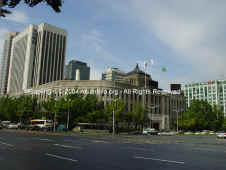
Challenges
and Opportunities
in Korea
Over
the six months since the Korean government and the
IMF agreed on the provisions of the IMF standby
loans in December 1997, the Korean government
implemented countless reform measures to stabilize
the situation. The government persuaded labor
union leaders and the general public to share the
burden of economic restructuring by forming a
high-profile body, the Tripartite Committee,
consisting of labor leaders, business leaders, and
public officials. The committee produced an
agreement, the Tripartite Accord, containing 90
detailed measures that constitute the basic
principles of the economic restructuring process.
On April 1998, US$21.8 billion worth of domestic
banks' short-term external debt was converted to
long-term government-guaranteed debt. In that same
month, the Korean government successfully launched
its inaugural global bond totaling US$4 billion.
These factors, together with Korea's improved
current account balance, raised usable foreign
reserves from US$8.9 billion at the end of
December 1997 to US$41.4 billion as of August
1998. The Won-dollar exchange rate has stabilized
around 1,300 Won per dollar.
The
government is responding decisively and with deft
leadership skills to the crisis at hand. Covering
a wide spectrum of economic structural reforms, in
finance, corporate governance, labor,
liberalization, and the public sector, the
following measures are currently
implemented.
Financial
Sector Reform
In
observance of the agreement reached between the
Korean government and the IMF, the economic reform
program being pursued focuses on macroeconomic
stability and overall reform of the Korean
economy. The macroeconomic policy aims to achieve
stabilization by requiring acquisition of
sufficient foreign reserves, reforming the
corporate and the financial sectors, and laying a
foundation for enhancing the country's long-term
growth potential.
The
Bank of Korea maintained a tight monetary policy
stance since 1997, reflected in the market
interest rate hike that at one point reached as
high as 20%. In the public sector, a stringent
government budget is being implemented with a 3.8%
growth rate, which is lower than the nominal GDP
growth. The organization and staff of government
agencies are being reorganized and paired down
while local government budgets are being reduced.
To
reform the ailing financial sector and to restore
public confidence in the system, resolution of
unsound financial institutions is being pursued as
a top reform priority.
The
Korea First Bank and the Seoul Bank, whose
deteriorated capital adequacy ratios resulted from
mismanagement, were recapitalized by the
government with the stocks of public enterprises.
The government's share of these two banks will
soon be sold off by open bidding to domestic or
foreign investors. The other 12 banks that failed
to meet the BIS capital adequacy ratios have
submitted rehabilitation plans to the Financial
Supervisory Commission (FSC). Thorough evaluation
is being conducted and an appropriate
restructuring of the entire financial sector will
take place involving acquisition, merger, or
purchase and assumption.
As
for merchant banking corporations, 14 of them have
been shut down with two others ordered to suspend
all activities. The remaining 14 merchant banks
are ordered to clear off bad loans through an
increase in equity capital or be shut down. The
licenses of two security companies and one
investment trust company have been revoked, and
investigations are now underway to evaluate the
management status of non-bank financial
institutions, such as leasing and life insurance
companies.
The
Non-performing Asset Resolution Fund, set up in
November 1997 to clear bad loans from the books of
financial institutions, has already bought bad
loans with a book-value of 16 trillion Won.
Furthermore, financial supervision has been
strengthened through improved supervisory system
and raised standards of prudential regulation. In
April 1998, the Financial Supervisory Commission (FSC)
was launched to integrate supervisory mechanisms
over banking, securities, and insurance
industries. In an attempt to enhance the
transparency in the financial sector, statistics
on non-performing loans of banks, including
substandard loans, are now released every six
months.
Prudential
standards were made stricter by requiring
financial institutions to set aside provisions of
100% loan losses and securities valuation losses.
Meanwhile, in order to resolve the problem of
financial insolvency as it applies to depositors,
the coverage of deposit protection is scheduled to
be narrowed. In November, the government announced
that the principal and interest on all types of
deposits at financial institutions would be
insured in full, for an interim period up until
the end of year 2000, in order to prevent
bank-runs.
From
August 1998, however, only the principal will be
guaranteed in the case of deposits exceeding 20
million Won per person. For deposits of less than
20 million Won, payment of the principal and
interest at the average rate for time deposits
with commercial banks will be guaranteed.
Corporate
Sector Reform
The
ongoing corporate sector reforms aim to achieve
two objectives. First, it aims to reduce the size
of corporate debt, and second, it aims to
institute a new corporate governance structure
that will induce better and more transparent
management. Unlike in the past, the government
will not intervene directly in the restructuring
of the corporate sector. Instead, the government
will focus only on improving the legal and
institutional environment to facilitate and
monitor the process. The government will support
the financial sector to expedite its restructuring
efforts by providing funds for recapitalization
and liquidate all non-performing bonds. Financial
restructuring will help the corporate sector
reform by easing liquidity constraints and
enhancing the monitoring mechanism.
In
Korea, the 30 largest chaebol account for
about one-third of total value added and in
addition to fixed assets in the manufacturing
sector. Although chaebol were the primary
engine of economic development in the past, it is
also true that their highly leveraged financial
structure and unprofitable expansion made the
entire economy very vulnerable to the economic
downfall. Moreover, because chaebol
business activities are diverse, and because they
are sector leaders, their economic influence is
even greater than their sheer size.
Nonetheless,
chaebol have voluntarily announced their
willingness to undergo a restructuring scheme that
will allow each chaebol to concentrate on
core businesses, implement a sound balance sheet
and transparent management, and improve governance
structure. Chaebol managers will be made
responsible for their investment choices, and
business practices. The government has made it
clear its intention to no longer favor large
businesses in providing various forms of
assistance. Instead, small and medium-sized firms
will be nurtured and protected from unfair
competition practices from the large sized
competitors.
In
order to enhance the reliability of corporate
financial statements, the FSC has set new
accounting and auditing rules in line with
internationally accepted standards. In addition,
all listed companies are now required to establish
a committee of external auditors. Upon
implementation of these new guidelines, the
quality and reliability of key financial
information provided by banks and corporations
will be improved, thus providing regulators,
shareholders, and the general public with a more
credible basis for performance evaluation.
Legal
protection for the rights of minority shareholders
has also been strengthened. The representation
requirement for derivative suits against
managerial abuse has been reduced from 1 % to 0.01
%. The revised Security Exchange Act also allows
any shareholder with at least 0.5 % (previously 1
%) ownership the right to ask the firms to dismiss
a director or an auditor, and with 1 % ownership
(previously 3 %) to review financial accounts of
the firm.
Additional
measures to improve corporate governance include
amending the Commercial Law to simplify M&A
procedures, shortening the appeal period for
mergers from two months to one month, introducing
a de facto directors system, implementing
a cumulative voting system, and bestowing voting
rights to institutional investors whom previously
have not been allowed to vote.
Corporate
Restructuring
The
fierce competition among chaebol to boost
productivity led them to set up subsidiaries and
investing in diverse lines of manufacturing where
profitability was high. However, as prices have
fallen due to oversupply around the world since
the mid-1990s, the financial structures of the
companies have deteriorated badly. The problem
became worse as domestic demand fell due to
business stagnation at home and investments were
excessive and overlapping. As a result, corporate
restructuring became necessary because the
over-extended and overlapping lines of businesses
among chaebol have become an obstacle to
economic recovery.
First,
big corporations led by Hyundai, Samsung, Daewoo,
LG and SK groups have agreed to realign their
lines of business in seven areas-semiconductors,
petrochemicals, automobiles, aircraft,
rolling-stock, electric generating facilities,
ship engines and petroleum refining.
The
gist of their agreement calls for efforts to merge
companies in the same line of business to reduce
the number of companies in each field. At the same
time, they plan to push for investment by
foreigners in their business. Thus, they hope to
reduce unnecessary investment, raise
competitiveness and promote foreign
investment.
Labor
Market Liberalization
The
labor market environment in Korea in the past has
been characterized as "rigid." The legal
system awarded workers substantial job security by
limiting redundancy layoffs and temporary labor
contracts. The conditions and procedures of
redundancy layoffs, which were not clear, in many
ways placed an obstacle to flexible market
adjustment, as economic growth slowed in the
1990s, and also as the economy shifted emphasis
from quantitative expansion to qualitative
enhancement with greater emphasis on
knowledge-intensive and high-tech industries. The
need for sectoral reallocation and downsizing
increased, but businesses often found their
ability to do so greatly restricted.
Liberalized
union activity since 1987 has increased rigidity
in the economy. In the late 1980s, the government
failed to control the illegal practices of unions,
sometimes resorting to selective intervention for
political gains. Furthermore, market forces could
not discipline industrial relations in large firms
and chaebol, as most people in Korea
believed that large firms will never go bankrupt.
The "too-big-to-fail" expectation
stemmed from a series of past industrial policies
favoring large firms.
In
particular, enterprise unions in chaebol
became stronger and more militant, and dismissals
became virtually impossible. The economic crisis
of 1997 provided an opportunity to enhance labor
market flexibility and restore market mechanisms.
It is understood that there is a need for a more
flexible labor market in which labor allocation
and wage determination are efficiently governed
through market mechanisms. The government has made
several announcements stating that while unlawful
layoffs will not be tolerated, economic
restructuring will take precedence over job
security. In February of 1998, the government
passed legislation legalizing redundancy layoffs,
and also relaxed the previously restrictive legal
provision relating to manpower leasing services.
Firms now facing labor demand can adjust
employment more flexibly and at a considerably
lower cost, a major step toward economic recovery.
To
form a consensus on labor-related issues, the
Tripartite Committee was formed among the
representatives of labor, business, and
government. The committee established rules for an
equitable sharing of both economic and noneconomic
costs, and attained public consensus for the
restructuring. The committee accomplished an
accord which contained a considerable number of
measures to enhance corporate governance
transparency, and to increase unemployment
benefits and labor market flexibility.
In
addition to improving efficiency through increased
flexibility, the Korean government is also
addressing equity and social issues. Unemployment
rates increased from 2.6 % in November 1997 to 7.6
% in July 1998, and is expected to increase
further. The rates are a source of concern for the
government which aims to reduce unemployment in
order to insure social stability.
Public
Sector Reform
In
the process of structural reform of the Korean
economy, successful fiscal and public sector
reform is crucial. A well-managed public sector is
seen as an essential factor in leading the whole
reform process, by setting a good example on the
one hand, and by effectively allocating limited
financial resources for the adjustment process on
the other. Budget deficits are unavoidable during
the first few years of restructuring and it will
be difficult to provide justification of higher
tax burdens to the people without showing that
comprehensive reforms in the public sector are
also being undertaken.
The
public sector in Korea has been long criticized
for its inefficiency and lack of transparency. It
is recognized that competition, market forces, and
corporate style management strategies are needed
to enhance efficiency and transparency, and to
improve the quality of administrative services. In
the area of government budgeting, it is well-known
that, in the past, the government has maintained a
sound fiscal stance in spite of the relatively low
overall tax burden ratio. The national debt-GNP
ratio in 1996 was just 9.5 %. However, there are
still many things to be done to increase value for
money. The budget structure must be changed to cut
the portion of nondiscretionary expenditure. There
are also efficiency problems in government
spending on agriculture, education, and
infrastructure. Some investment programs were
initiated without the appropriate and rigorous
cost-benefit analysis.
It
is very important to improve the overall budgeting
system to enhance transparency and accountability
and to reinforce the macroeconomic stabilization
function of fiscal policies. The public sector
reform was deemed necessary to meet the fiscal
demand of the public and to finance the costs of
structural adjustments while keeping a sound
fiscal stance in the long run.
Recognizing
this, the Korean government has started to reform
the budgetary and public sector. Initial
restructuring of the central government
organization began in February of 1998. To
initiate the process of public sector reform, the
Government Reform Office in the Planning and
Budget Commission was launched. A plan for
reducing the number of civil servants by
approximately 10 % was announced. Five ministries
were eliminated out of the total number of 22.
State-owned enterprises and other
government-funded institutes are being thoroughly
examined and will be streamlined to minimize
government subsidies and to increase efficiency.
The
range of direct government intervention will be
reduced, and market competition in the public
sector will be more widely introduced through
self-discipline and privatization. The public
sector will, in the long run, become a corporation
financed by taxpayers. Customer-oriented
administrative services will be provided with
restructured incentive systems for public
employees and a widely adopted practice of
outsourcing.
Korea's
tax system will be streamlined in order to
increase transparency in line with international
standards and the number of tax items will be
reduced by consolidating many earmarked surtaxes
and abolishing ineffective tax items. The income
tax base will need to be broadened and more
property taxes will be imposed.
Opportunities
for Further Growth
Korea's
economy now stands at an important crossroad as it
faces new challenges.
The
future path of the country depends upon how
prudently the political leaders, the government,
the business leaders, workers, and the public
manage the current economic crisis. Current
account surplus has been maintained since November
1997 with the help of increased exports and
decreased domestic demand. The foreign exchange
rate has stabilized at near precrisis level and
the stock price index has recovered from its lows
due to the resumption of foreign capital influx.
At the same time, series of liberalization
measures are starting to take effect, especially
in the corporate sector.
There
has been active M&A activities between foreign
and Korean firms, and foreign participation in the
Korean bond market has increased. It is important
to keep in mind that these reform process did not
begin with the breakout of the 1997 financial
crisis. Instead, they were already in the process
of being implemented under Kim Young Sam's
globalization policy, examplified by South Korea's
membership in the OECD. Therefore, the consensus
for reform has existed in minds of Korean people.
Furthermore, the election of the President from an
opposition party created an adequate political
environment to implement change, allowing reforms
to take place at faster pace.
With
sound infrastructure for market economy in place,
Korea will once again become the economic center
of Northeast Asia, with ample opportunities for
investment. Korea's rich human resources, history
of miraculous development, and unyielding
commitment to liberal democracy all attest to its
potential to recreate a robust economy in the
decades to come.
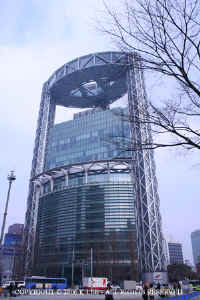
|








